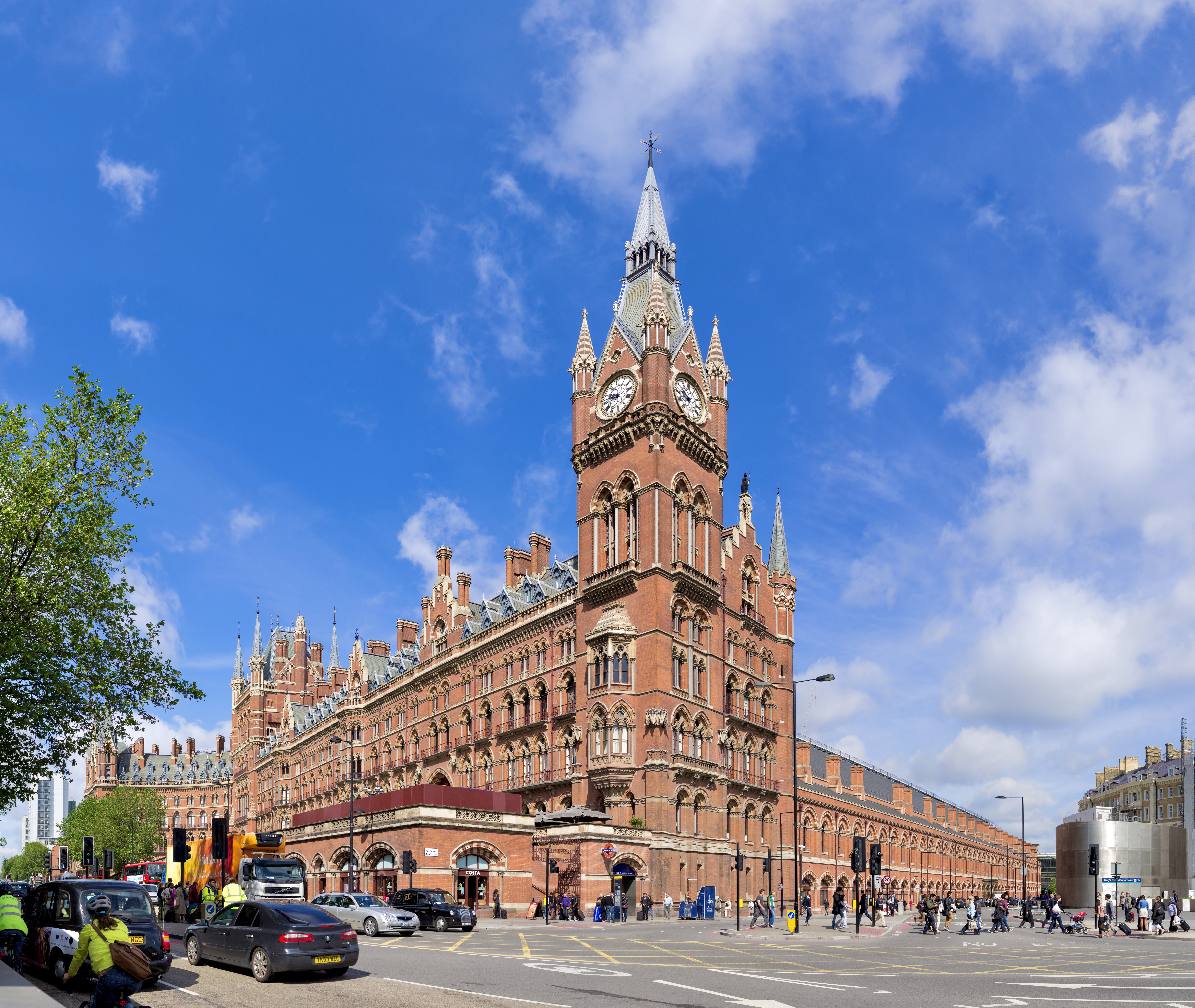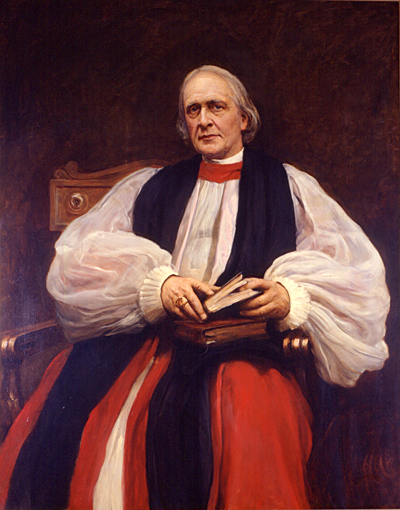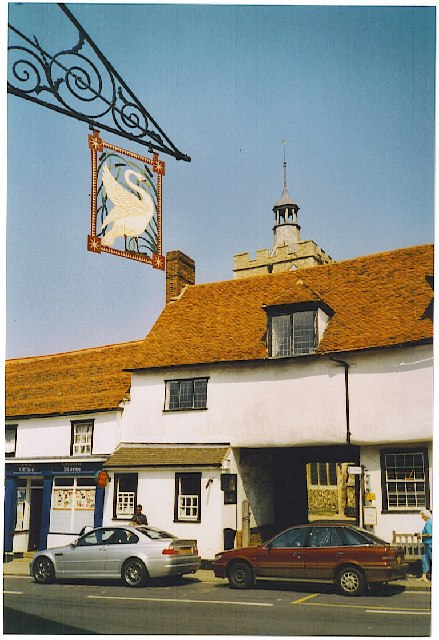|
Edgar Allison Peers
Edgar Allison Peers (7 May 1891 – 21 December 1952), also known by his pseudonym Bruce Truscot, was an English Hispanist and education management scholar.W. C. Atkinson, 'Peers, Edgar Allison (1891–1952)’, rev. John D. Haigh, ''Oxford Dictionary of National Biography'', OUP, 200accessed 24 July 2007/ref> He was Professor in Hispanic Studies at the University of Liverpool and is notable for founding the Modern Humanities Research Association (in 1918) and the ''Bulletin of Hispanic Studies'' (in 1934). As "Bruce Truscot", a pseudonym kept secret until his death, Peers wrote three books offering a critique of the policies and problems associated with British universities, coining the term " red-brick university". Biography Peers was born on 7 May 1891 at Leighton Buzzard, the son of John Thomas Peers, a civil servant, and his wife, Jessie Dale, daughter of Charles Allison. He was educated at Dartford Grammar School and Christ's College, Cambridge, where he was a scholar ... [...More Info...] [...Related Items...] OR: [Wikipedia] [Google] [Baidu] |
Leighton Buzzard
Leighton Buzzard ( ) is a market town in Bedfordshire, England, in the southwest of the county and close to the Buckinghamshire border. It lies between Aylesbury, Tring, Luton/ Dunstable and Milton Keynes, near the Chiltern Hills. It is northwest of Central London and linked to the capital by the Grand Union Canal and the West Coast Main Line. The built-up area extends on either side of the River Ouzel (here about 2 metres wide) to include its historically separate neighbour Linslade, and is administered by the Leighton-Linslade Town Council. History Foundation and development It is unclear when the town was initially founded, although some historians believe that there may have been settlement in the area from as early as 571. There are a number of theories concerning the derivation of the town's name; ‘Leighton’ came from Old English ''Lēah-tūn'', meaning 'farm in a clearing in the woods', and ‘Buzzard’ was added by the Dean of Lincoln, in whose diocese ... [...More Info...] [...Related Items...] OR: [Wikipedia] [Google] [Baidu] |
Dartford Grammar School
Dartford Grammar School is a selective secondary (ages 11–19) foundation school for boys in Dartford, Kent, England, which admits girls to its sixth form (ages 16–18). All of the students joining the school are considered to be from the top 25% of the ability range, as determined by the 11-Plus examinations. The students come from Dartford, neighbouring towns and villages, and nearby London boroughs, as well as an increasing number of students from Essex. The current roll is 1,203, including 461 in the sixth form. It is the brother school of Dartford Grammar School for Girls. History The school was founded in 1576 by Edward Gwyn, a merchant; William Vaughan, a philanthropist and landowner; and William Death. A 1660 document outlined the original terms for the founding of the school: "William Vaughan, Edward Gwyn and William Death donated land and property near the Market House in Dartford High Street, the profits from which were to be used for maintaining a school a ... [...More Info...] [...Related Items...] OR: [Wikipedia] [Google] [Baidu] |
Teresa Of Ávila
Teresa of Ávila, OCD (born Teresa Sánchez de Cepeda y Ahumada; 28 March 15154 or 15 October 1582), also called Saint Teresa of Jesus, was a Spanish Carmelite nun and prominent Spanish mystic and religious reformer. Active during the Counter-Reformation, Teresa became the central figure of a movement of spiritual and monastic renewal, reforming the Carmelite Orders of both women and men. The movement was later joined by the younger Spanish Carmelite friar and mystic John of the Cross, with whom she established the Discalced Carmelites. A formal papal decree adopting the split from the old order was issued in 1580. Her autobiography, ''The Life of Teresa of Jesus'', '' The Interior Castle'', and ''The Way of Perfection'', are prominent works on Christian mysticism and Christian meditation practice. In her autobiography, written as a defense of her ecstatic mystical experiences, she discerns four stages in the ascent of the soul to God: mental prayer and meditation; ... [...More Info...] [...Related Items...] OR: [Wikipedia] [Google] [Baidu] |
St John Of The Cross
John of the Cross, OCD ( es, link=no, Juan de la Cruz; la, Ioannes a Cruce; born Juan de Yepes y Álvarez; 24 June 1542 – 14 December 1591) was a Spanish Catholic priest, mystic, and a Carmelite friar of converso origin. He is a major figure of the Counter-Reformation in Spain, and he is one of the thirty-seven Doctors of the Church. John of the Cross is known for his writings. He was mentored by and corresponded with the older Carmelite, Teresa of Ávila. Both his poetry and his studies on the development of the soul are considered the summit of mystical Spanish literature and among the greatest works of all Spanish literature. He was canonized by Pope Benedict XIII in 1726. In 1926, he was declared a Doctor of the Church by Pope Pius XI, and is also known as the "mystical doctor". Life Early life and education He was born Juan de Yepes y Álvarez at Fontiveros, Old Castile into a converso family (descendants of Jewish converts to Catholicism) in Fontiveros, near ... [...More Info...] [...Related Items...] OR: [Wikipedia] [Google] [Baidu] |
Redbrick University
A red brick university (or redbrick university) was originally one of the nine civic universities founded in the major industrial cities of England in the 19th century. However, with the 1960s proliferation of plate glass universities and the reclassification of polytechnics in the Further and Higher Education Act 1992 as post-1992 universities, all British universities founded in the late 19th and early 20th centuries in major cities are now sometimes referred to as "red brick". Six of the original redbrick institutions, or their predecessor institutes, gained university status before World War I and were initially established as civic science or engineering colleges. Eight of the nine original institutions are members of the Russell Group. Origins of the term and use The term ''red brick'' or ''redbrick'' was coined by Edgar Allison Peers, a professor of Spanish at the University of Liverpool, to describe the civic universities, while using the pseudonym "Bruce Truscot" ... [...More Info...] [...Related Items...] OR: [Wikipedia] [Google] [Baidu] |
Victorian Architecture
Victorian architecture is a series of architectural revival styles in the mid-to-late 19th century. ''Victorian'' refers to the reign of Queen Victoria (1837–1901), called the Victorian era, during which period the styles known as Victorian were used in construction. However, many elements of what is typically termed "Victorian" architecture did not become popular until later in Victoria's reign, roughly from 1850 and later. The styles often included interpretations and eclectic revivals of historic styles ''(see Historicism)''. The name represents the British and French custom of naming architectural styles for a reigning monarch. Within this naming and classification scheme, it followed Georgian architecture and later Regency architecture, and was succeeded by Edwardian architecture. Although Victoria did not reign over the United States, the term is often used for American styles and buildings from the same period, as well as those from the British Empire. Victorian a ... [...More Info...] [...Related Items...] OR: [Wikipedia] [Google] [Baidu] |
Victoria Building Tower UoL
Victoria most commonly refers to: * Victoria (Australia), a state of the Commonwealth of Australia * Victoria, British Columbia, provincial capital of British Columbia, Canada * Victoria (mythology), Roman goddess of Victory * Victoria, Seychelles, the capital city of the Seychelles * Queen Victoria (1819–1901), Queen of the United Kingdom (1837–1901), Empress of India (1876–1901) Victoria may also refer to: People * Victoria (name), including a list of people with the name * Princess Victoria (other), several princesses named Victoria * Victoria (Gallic Empire) (died 271), 3rd-century figure in the Gallic Empire * Victoria, Lady Welby (1837–1912), English philosopher of language, musician and artist * Victoria of Baden (1862–1930), queen-consort of Sweden as wife of King Gustaf V * Victoria, Crown Princess of Sweden (born 1977) * Victoria, ring name of wrestler Lisa Marie Varon (born 1971) * Victoria (born 1987), professional name of Song Qian, Chinese sing ... [...More Info...] [...Related Items...] OR: [Wikipedia] [Google] [Baidu] |
Heart Failure
Heart failure (HF), also known as congestive heart failure (CHF), is a syndrome, a group of signs and symptoms caused by an impairment of the heart's blood pumping function. Symptoms typically include shortness of breath, excessive fatigue, and leg swelling. The shortness of breath may occur with exertion or while lying down, and may wake people up during the night. Chest pain, including angina, is not usually caused by heart failure, but may occur if the heart failure was caused by a heart attack. The severity of the heart failure is measured by the severity of symptoms during exercise. Other conditions that may have symptoms similar to heart failure include obesity, kidney failure, liver disease, anemia, and thyroid disease. Common causes of heart failure include coronary artery disease, heart attack, high blood pressure, atrial fibrillation, valvular heart disease, excessive alcohol consumption, infection, and cardiomyopathy. These cause heart failure by alteri ... [...More Info...] [...Related Items...] OR: [Wikipedia] [Google] [Baidu] |
Spanish Mystics
The Spanish mystics are major figures in the Catholic Reformation of 16th and 17th century Spain. The goal of this movement was to reform the Church structurally and to renew it spiritually. The Spanish Mystics attempted to express in words their experience of a mystical communion with Christ. ''Encyclopædia Britannica'', retrieved April 21, 2008 Language and writing style These writers had a strong influence on the development of the Spanish Language and were said to have ushered in the " Golden Age of Spanish Literature." At the beginning of the time period, the language was viewed as coarse; by the end, the language ...[...More Info...] [...Related Items...] OR: [Wikipedia] [Google] [Baidu] |
Romanticism
Romanticism (also known as the Romantic movement or Romantic era) was an artistic, literary, musical, and intellectual movement that originated in Europe towards the end of the 18th century, and in most areas was at its peak in the approximate period from 1800 to 1850. Romanticism was characterized by its emphasis on emotion and individualism, clandestine literature, paganism, idealization of nature, suspicion of science and industrialization, and glorification of the past with a strong preference for the medieval rather than the classical. It was partly a reaction to the Industrial Revolution, the social and political norms of the Age of Enlightenment, and the scientific rationalization of nature. It was embodied most strongly in the visual arts, music, and literature, but had a major impact on historiography, education, chess, social sciences, and the natural sciences. It had a significant and complex effect on politics, with romantic thinkers influencing conservatism, ... [...More Info...] [...Related Items...] OR: [Wikipedia] [Google] [Baidu] |
Wellington College, Berkshire
Wellington College is a public school (English independent day and boarding school) in the village of Crowthorne, Berkshire, England. Wellington is a registered charity and currently educates roughly 1,200 pupils, between the ages of 13 and 18, per annum. The college was built as a national monument to the first Duke of Wellington (1769–1852), in whose honour it is named. Queen Victoria laid the foundation stone in 1856 and inaugurated the School's public opening on 29 January 1859. Many former Wellington pupils fought in the trenches during the First World War, a conflict in which 707 of them lost their lives, many volunteering for military service immediately after leaving school. A further 501 former pupils were killed in action in the Second World War. The school is a member of the Rugby Group of 18 British public schools and is also a member of the G20 Schools group. History Wellington College was granted a royal charter in 1853 as "''The Royal and Religious Fo ... [...More Info...] [...Related Items...] OR: [Wikipedia] [Google] [Baidu] |
Felsted School
(Keep your Faith) , established = , closed = , type = Public school Independent day and boarding , religion = Church of England , president = , head_label = Headmaster , head = Chris Townsend , r_head_label = , r_head = , chair_label = , chair = , founder = Richard Rich, 1st Baron Rich , specialist = , address = Stebbing Road , city = Felsted , county = Essex , country = England , postcode = CM6 3LL , local_authority = , urn = 115395 , ofsted = , dfeno = 881/6009 , staff = , enrolment = 1,000 , gender = Co-educational , lower_age = 4 , upper_age = 18 , houses = , colours = Burgundy (Prep School) navy blue (Senior School) , publication = , free_label_1 = Former pupils , free_1 = Old Felstedians , free_label_2 = , free_2 = , free_label_3 = , free_3 = , website ... [...More Info...] [...Related Items...] OR: [Wikipedia] [Google] [Baidu] |

.jpg)






